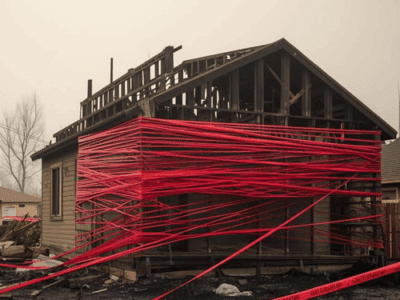Local Authority Over Oil Drilling Heads to California Supreme Court
Cities and counties have long held authority to decide where and whether to allow oil and gas exploration and extraction. The state’s high court can make that crystal clear.

If California residents decide by voter initiative to limit land uses for oil and gas extraction in their county, can fossil fuel businesses turn around and claim state preemption to overturn the voice of the voters? That’s what is at issue in a case that’s headed to the State Supreme Court.
Oral arguments in this case (Chevron v. County of Monterey) come at a crucial time in two separate, but related, campaigns: to phase out oil drilling operations near homes and schools, and to phase out fossil fuel infrastructure in buildings. As local communities act to address the dual threats of climate change and public health, they must not be deprived of their traditional land use powers as one tool in their toolbox.
The Back Story
Back in November 2016, Monterey voters approved Measure Z, a ballot measure resulting from a grassroots effort to ban land uses supporting all new oil and gas wells, as well as the use of hydraulic fracturing and other high-intensity methods of oil and gas extraction in the coastal county. Monterey is mostly known for agriculture and tourism, thanks to scenic stops like Big Sur and Carmel, but it also has a history of oil extraction that the measure’s supporters said endangered residents, farms and the environment. Just a month after voters passed the measure, however, Chevron and other fossil fuel companies, as well as a collection of royalty and mineral rights holders, sued to challenge it, asserting that California state law preempts this local regulation.
The case turns on Section 3106 of the California Public Resources Code, which states that CalGEM––the regulatory body responsible for permitting oil and gas operations at the state level––may permit the drilling of new wells and “shall encourage the wise development of oil and gas.” The plaintiffs argue that the state’s authority to permit specific “methods and practices” of fossil fuel operations means that localities may not then ban new wells or high-intensity extraction techniques, no matter how unsuitable these land uses may be for the locality.
Both the trial court and the Sixth Appellate District adopted the plaintiffs’ arguments, casting preemption in the widest possible light. Although the Appellate District was quick to note that it did not intend to cast doubt on the validity of local land use authority, it did little to explain any difference between Measure Z and a “traditional” land use ordinance.

The Arguments
In October 2022, the Frank G. Wells Environmental Law Clinic filed a brief in the Supreme Court on behalf of League of California Cities, California State Association of Counties, and the County of Los Angeles, supporting local government authority to limit specific oil and gas extraction-related land uses. The Clinic’s brief argues that Measure Z is valid, citing over a century of court decisions upholding local government regulation determining where, whether, and even how oil and gas operations may take place. Here’s a brief rundown of some of the arguments.
- Monterey County, like all municipalities across California, has extensive authority under its general police power to adopt regulations related to public health, safety, and welfare. Local governments have, for many decades, used this authority to enact bans of oil and gas operations, as well as specific production techniques. The seminal case considering local authority over oil and gas operations, Beverly Oil, upheld an ordinance prohibiting the drilling of new oil wells and the deepening of existing wells. This holds true even outside of the area of land use, as the Ninth Circuit recognized almost 100 years ago.
- However, land use controls are entitled to an even stronger presumption against preemption, particularly in areas where local governments have traditionally regulated (like oil and gas operations). Local governments’ land use authority includes the ability to outright ban specific land uses within their jurisdiction, even where the state may otherwise “encourage” those uses. This holds true for cannabis dispensaries, trash incinerators, and oil fields.
- The proper test for conflict preemption in California, which the appellate court purported to apply, is whether a local regulation is “contradictory or inimical” to the state statute. The tepid encouragement of “the wise development of oil and gas,” and the state’s concurrent permitting authority alongside local governments does not satisfy this test. As the California Supreme Court has noted: local laws are not “contradictory or inimical” to a state statute unless they “prohibit what the statute commands or command what it prohibits.”
The Appellate District’s decision in this case highlights some of the confusion that could arise if the fossil fuel plaintiffs got their way. First, the case muddles its preemption analysis. While the Appellate District claims to analyze the validity of the law under a conflict preemption theory, it ultimately adopts an argument that sounds far more in obstacle preemption, a federal doctrine that California courts have never explicitly adopted. Although the California Supreme Court has occasionally flirted with the idea of adopting obstacle preemption in the state, both the plaintiffs and the Appellate District frame obstacle preemption far more broadly than courts have applied it in the past. As the California Supreme Court noted just last year, a showing of obstacle preemption requires “unmistakably clear language” demonstrating preemptive intent.
Second, the Appellate District flips the presumption against preemption on its head. The Appellate District bases its reasoning, in part, on the fact that the defendants in this case “failed to identify any provision of state law that . . . reflects that the Legislature intended to reserve all or part of the authority to make decisions about whether an oil drilling operation should be permitted to drill new wells or utilize wastewater injection for the discretion of local entities.” Of course, this is not the standard that local governments are held to in preemption cases; applied properly, the presumption against preemption places the burden on those challenging a purportedly preempted law, asking whether the Legislature has clearly stated its intent to divest local governments of their inherent constitutional power. As noted above, this is especially true where local governments have traditionally exercised control, such as in the fields of oil and gas and––more broadly––land use.
But most crucially, the Appellate District’s failure to draw a clear line between traditional land use authority and the improper regulation of the “methods and practices” of oil operations makes the opinion difficult to understand and even more difficult to apply. For instance, the Appellate District seems to distinguish between locational zoning and jurisdiction-wide prohibitions, stating that “Measure Z did not identify any locations where oil drilling may or may not occur.” But, as the defendant-intervenors point out, Measure Z squarely answers this question: “not in unincorporated Monterey County.” The fact that a ban is jurisdiction-wide does not mean that it somehow ceases to be a land-use measure. The Appellate District also doubles down on its claim that forbidding all oil and gas operations in specific zones is somehow more permissible than Measure Z, which prohibits a narrower subset of oil and gas operations.
All in all, the Appellate District’s opinion is deeply confusing, even to the parties that will soon be arguing in favor of the ruling to the California Supreme Court. For instance, one plaintiff––the National Association of Royalty Owners––submitted a brief claiming the Public Resources Code “does not prohibit counties from exercising their zoning powers to decide where, if at all, oil and gas operations within their boundaries may be conducted.” Yet as other amici pointed out, some fossil fuel industry representatives have formally threatened litigation over local phase out measures because of this decision. Another plaintiff in this case, Aera Energy, recently raised similar preemption claims to argue against zoning laws creating buffers between oilfields and homes or schools.
The Risk of Confusion
For these fossil fuel plaintiffs, it feels like confusion is the goal. These oral arguments come as local governments and other observers try to make sense of an April decision by the Ninth Circuit Court of Appeals that invalidated Berkeley’s prohibition on natural gas infrastructure in new buildings. As our colleague Daniel Carpenter-Gold lays out here, the Berkeley decision also raises more questions than it answers for local governments. The threat of litigation––particularly on the back of these two mystifying opinions––may be just as effective at chilling the rightful exercise of local authority as actual litigation. Hopefully, the California Supreme Court takes this opportunity to remedy the case at hand.
The local police power over whether and where to approve oil and gas businesses is of critical importance right now to Los Angeles County with its 1,547 active and idle oil wells. Although the California Legislature passed SB 1137, creating “health protection zones” between oil drilling and vulnerable populations, the oil industry has managed to put that law on hold by qualifying its own ballot measure. Meanwhile, the LA City Council has voted to phase out oil drilling and ban new wells. Which brings us back to where we began—efforts to overturn the voice of the people. As local governments up and down the state try to meet this moment, they must not see their land use authority stripped from them.
Oral arguments in Chevron v. County of Monterey are scheduled for Thursday, May 25 at 1:30 PM PT.







Reader Comments